What's the Deal with Duck Bills?
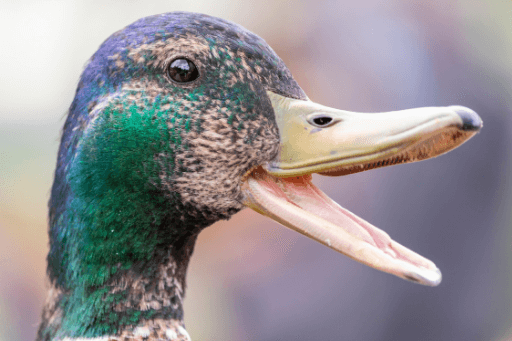
If you've ever gotten a glimpse inside the beak of a bold duck or goose that approached you at a local park or elsewhere, you may have done a double take. Were those…teeth?!
Ducks don't have teeth — or do they? What exactly are ducks up to when they tip forward and submerge their front halves in the water? And why do duck bills have that odd “duck-billed” shape, anyway? We're here to answer all of your questions about ducks' eating habits and shed light on those famously funny-shaped beaks.
Do Ducks Have Teeth?
First, some basic anatomy. Teeth are hard structures attached to the jaws of some groups of vertebrates (animals with backbones). Many vertebrate animals — humans included — use teeth to chew up food before swallowing. But that's not all teeth are good for. Some animals use their teeth for capturing prey and other tasks.
So, do ducks have teeth? No — in fact, no birds do! Hence the old saying “scarce as hen's teeth.”
Bird mouths are very different from those of other vertebrates. Over millennia, evolution has modified bird jaws into the specialized structures we know as beaks or bills, which all feathered creatures rely on instead of teeth for gathering and manipulating food. Beaks occur in many different forms, adapted for the specific diet of each bird species.
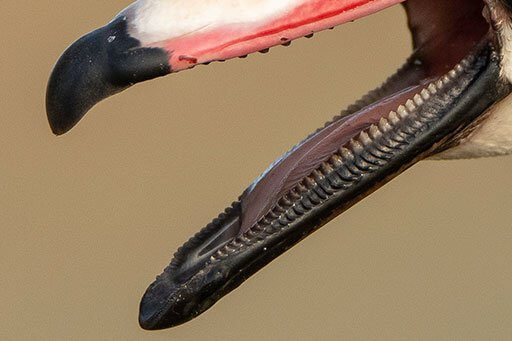
Okay, but How Do Ducks Eat?
If you look in the beak of a typical duck, running along its inside edges you'll see comb-like projections called lamellae, from a Latin word meaning “thin plate.” Lamellae may look like a bit like teeth, but they're actually part of the bill itself. Combined with the wide, flat (or spatulate) shape of most ducks' beaks, and the flexible lower mandible's ability to open just a tiny bit to let water flow through, lamellae act like a sieve that ducks can use to strain bits of plant matter and other edible morsels out of water or mud. Filter-feeding ducks like the Northern Shoveler mentioned below have the most lamellae of all.
Although ducks and geese are the most well-known birds with lamellae, a few other filter-feeding birds, such as flamingos, have them as well. Despite lamellae's passing resemblance to teeth, ducks don't use them to chew: You may have seen a duck doing something that looks a bit like chewing, but those nibbling motions are just its way of repositioning food as it prepares to gulp it down.
Besides the lamellae, there are a few other interesting features of duck bills worth noting:
The edges of duck bills are soft and sensitive because many duck species find food largely by touch. Near the tip of a duck's upper mandible is a small, hard bump called a nail, which ducks sometimes use for digging through mud in search of food.
In addition to lamellae, some ducks and geese have spiky projections called papillae running down the sides of their tongues. These also help with filter-feeding.
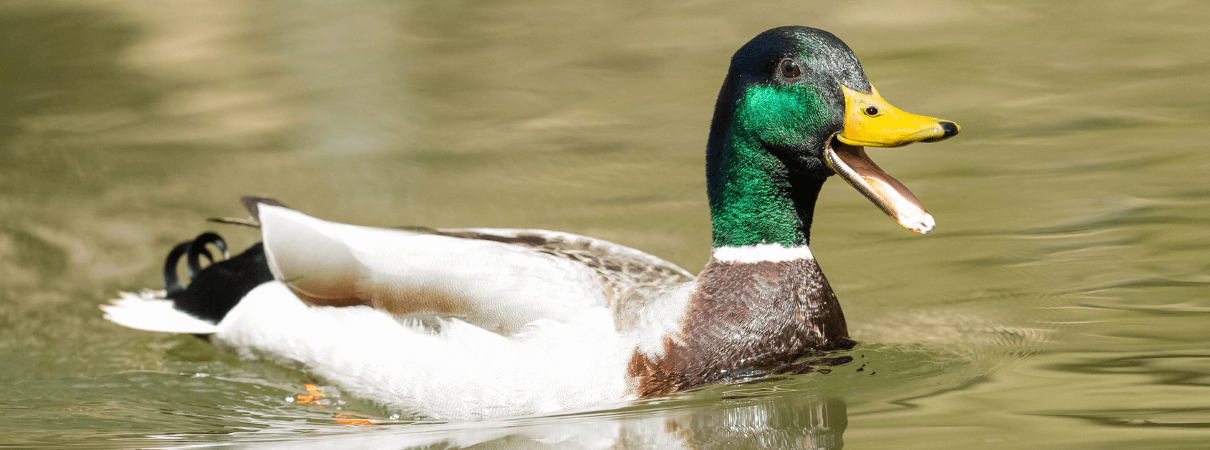
Dabblers and Divers
Duck species differ, but broadly speaking, the species are divided into two groups:
- Dabbling ducks feed mostly at and near the surface of the water, tipping forward to stick their heads underwater.
- Diving ducks dive beneath the water's surface in search of food, propelling themselves with feet positioned far back on their bodies.
These duck groups contain a number of species that call North America home. Here a just a few of the fascinating ways North American duck species have evolved bills for different diets:
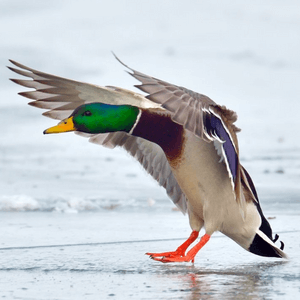
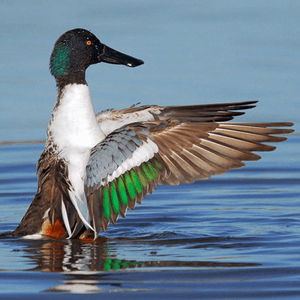
Northern Shovelers get their name from the exaggerated shape of their extra-long and extra-wide bills, which they use to skim for tiny creatures at the surface of the water. The upper beaks (upper mandibles) of these dabblers are packed with more than 200 tiny ridges (or lamellae), which act like a strainer.
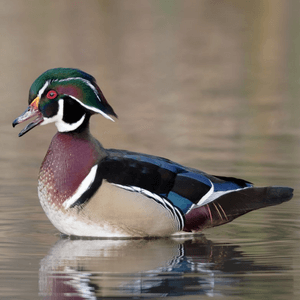
Wood Ducks have shorter, narrower bills than most other dabbling ducks. This lets them snip plants, grab small invertebrates, and pick up acorns (a favorite Wood Duck food) in the forested wetlands they frequent.
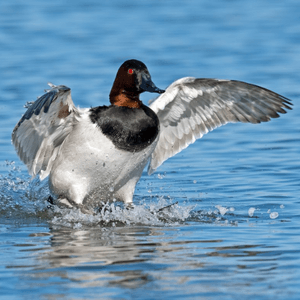
Canvasbacks are diving ducks with stout, sloping bills for grasping the leaves and yanking out the fleshy roots of underwater plants, which make up much of their diet during migration and winter. In the breeding season, Canvasbacks switch to a more varied diet that also includes invertebrates and small fish.

Surf Scoters spend much of the year along the coasts and thus are considered “sea ducks,” even though they nest in freshwater habitats in northern Canada and Alaska. They're shellfish specialists, diving under the waves and using their broad, chunky bills to pry mussels and clams off of rocks.
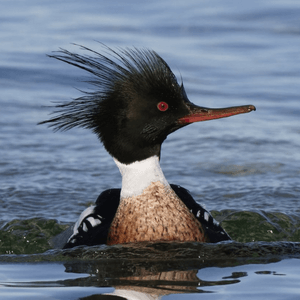
Red-breasted Mergansers and several related species are unusual among ducks because they have no lamellae. Instead, their narrow, serrated, sharp-tipped beaks are the perfect tools for catching fish underwater.
Feeding Does Not Help Ducks
You can help wild ducks by supporting efforts to conserve their natural, food-rich habitats. But you should not try to feed them. Not only are carbohydrate-rich foods like bread bad for waterfowl health — feeding can attract large concentrations of ducks to areas that can't support them and that aren't safe for them. Plus, any food that goes uneaten can attract unwanted pests and pollute small bodies of water.
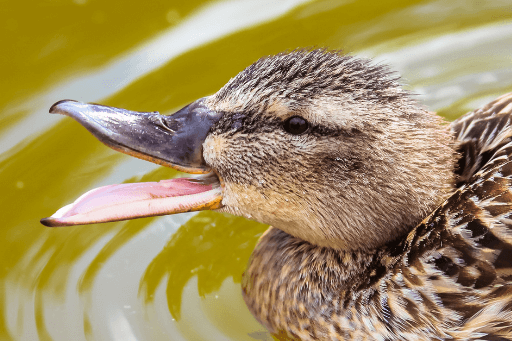
Birds in Trouble
While the populations of mallards and other ducks mentioned above have rebounded or held steady in recent decades, they still face dangers — and they aren't alone.
In less than a single human lifetime, 2.9 billion breeding adult birds have been lost from the United States and Canada, across every ecosystem. Scientists identify habitat loss as the biggest overall driver of bird declines. But birds also face threats from cats and other invasive species, glass collisions, exposure to pesticides, and climate change, among other things.
Protecting birds from these dangers is a major undertaking — and we need your help. You can get started by living a bird-friendly life, taking action for birds, or making a donation to support ABC's bird conservation mission.
 | Rebecca Heisman is a science writer based in eastern Washington. Her first book, which tells the scientific backstory of how we know what we know about bird migration, will be out in spring 2022. |


















































